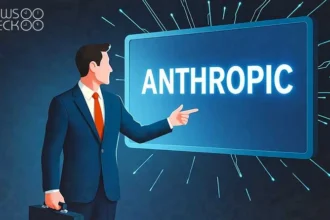Satya Nadella: The Man Who Transformed Microsoft Into a Trillion-Dollar Company
When Satya Nadella became the CEO of Microsoft in 2014, many people doubted if he could save the struggling tech giant. Today, he has proven everyone wrong. Under his leadership, Microsoft has become one of the most valuable companies in the world, worth over $3 trillion. But who is Satya Nadella, and how did he achieve this remarkable transformation?
In this article, we’ll explore everything about Satya Nadella – from his early life in India to his journey at Microsoft, his leadership style, major achievements, and what makes him one of the most successful CEOs in the technology industry.
Who is Satya Nadella?
Satya Nadella is the Chief Executive Officer and Chairman of Microsoft Corporation. He is the third CEO in Microsoft’s history, following Bill Gates and Steve Ballmer. Born on August 19, 1967, in Hyderabad, India, Nadella represents the success story of an immigrant who rose to lead one of the world’s biggest technology companies.
As of 2024, Satya Nadella’s net worth is estimated at over $1 billion, making him one of the wealthiest tech executives in Silicon Valley. But his real wealth lies in how he transformed Microsoft’s culture and business strategy, taking the company from near-irrelevance to industry leadership.
Early Life and Education: The Foundation of Success
Growing Up in Hyderabad
Satya Nadella grew up in Hyderabad, India, in a middle-class family. His father was an Indian Administrative Service officer, and his mother was a Sanskrit teacher. From a young age, Nadella showed a passion for learning and technology.
Educational Journey
Nadella’s education laid the groundwork for his future success:
Bachelor’s Degree: He earned his degree in Electrical Engineering from the Manipal Institute of Technology in India in 1988.
Master’s Degree: After moving to the United States, he completed his Master’s in Computer Science from the University of Wisconsin-Milwaukee in 1990.
MBA: Years later, while working at Microsoft, Nadella pursued an MBA from the University of Chicago Booth School of Business, which he completed in 1996.
This combination of technical knowledge and business understanding would prove crucial in his career at Microsoft.
The Microsoft Journey: From Employee to CEO
Joining Microsoft in 1992
Satya Nadella joined Microsoft in 1992, during the early days of Windows operating system dominance. He started his career working on various products and gradually moved up through different positions.
Key Roles Before Becoming CEO
Before becoming CEO, Nadella held several important positions at Microsoft:
- Led the Server and Tools Business division
- Oversaw the development of Microsoft’s cloud computing platform, Azure
- Managed the Bing search engine and other online services
- Headed the Cloud and Enterprise division
His work with Azure cloud services proved to be the most important experience. Nadella recognized early that cloud computing was the future, and he pushed Microsoft hard in this direction. This vision would become the cornerstone of Microsoft’s transformation.
Becoming CEO in 2014
On February 4, 2014, Satya Nadella was appointed as the CEO of Microsoft. At that time, Microsoft was struggling. The company had missed the mobile revolution, lost its cool factor, and was seen as a dinosaur in the fast-moving tech world.
Many analysts wondered if Microsoft could ever recover. But Nadella had a plan.
You Might Like it: When Science Stops Asking ‘Can We?’ and Forgets to Ask ‘Should We?
Satya Nadella’s Leadership Style: Growth Mindset and Empathy
What makes Satya Nadella different from other tech CEOs is his unique leadership philosophy. He didn’t come in with an aggressive, competitive attitude. Instead, he brought something rare to Silicon Valley: empathy and a growth mindset.
The Growth Mindset Philosophy
Nadella introduced the concept of “growth mindset” to Microsoft, borrowed from psychologist Carol Dweck’s research. This means:
- Believing that abilities can be developed through learning
- Embracing challenges instead of avoiding them
- Learning from mistakes rather than hiding them
- Valuing effort and perseverance
- Celebrating learning, not just winning
He changed Microsoft’s culture from “know-it-all” to “learn-it-all.” This simple shift had profound effects on how employees worked, collaborated, and innovated.
Empathy in Business Leadership
Nadella’s personal life deeply influenced his leadership style. His son Zain was born with cerebral palsy, which taught Nadella about empathy, patience, and seeing the world from different perspectives.
He brought this empathy to Microsoft:
- Focusing on customer needs, not just products
- Creating accessible technology for people with disabilities
- Building a more inclusive workplace culture
- Encouraging collaboration instead of internal competition
- Valuing diversity and different perspectives
Breaking Down Silos
One of Microsoft’s biggest problems was internal competition between different teams. Product groups fought against each other instead of working together. Nadella broke down these silos and encouraged teamwork across the entire company.
This cultural transformation was just as important as any business strategy. Happy, collaborative employees create better products and deliver better results.
Also Read: Is Satoshi Nakamoto a Code Name for the U.S. Deep State?
Major Achievements: How Satya Nadella Transformed Microsoft
1. Cloud Computing Revolution with Azure
Nadella’s biggest achievement is making Microsoft a cloud computing leader. When he became CEO, Amazon Web Services (AWS) dominated the cloud market. Microsoft was nowhere.
Today, Microsoft Azure is the second-largest cloud platform in the world, competing directly with AWS and Google Cloud. Azure generates tens of billions of dollars in revenue annually and continues growing at impressive rates.
The cloud-first strategy transformed Microsoft from a software company into a platform and services company. This shift saved Microsoft and positioned it for future growth.
2. Reaching Trillion-Dollar Valuations
Under Nadella’s leadership, Microsoft achieved remarkable financial milestones:
- Crossed $1 trillion market capitalization in 2019
- Reached $2 trillion valuation in 2021
- Surpassed $3 trillion in 2024
The company’s stock price has increased more than 10 times since Nadella became CEO. Shareholders who invested when he took over have seen incredible returns.
3. Strategic Acquisitions
Nadella led several major acquisitions that strengthened Microsoft’s position:
LinkedIn (2016): Purchased for $26.2 billion, LinkedIn became a profitable social network for professionals and integrated well with Microsoft’s business tools.
GitHub (2018): Bought for $7.5 billion, GitHub brought millions of developers into the Microsoft ecosystem.
Nuance Communications (2021): Acquired for $19.7 billion to strengthen AI and healthcare technology capabilities.
Activision Blizzard (2023): Completed a massive $69 billion acquisition, making Microsoft a major player in gaming with titles like Call of Duty and World of Warcraft.
These weren’t just purchases – they were strategic moves that expanded Microsoft’s reach into new markets and customer segments.
4. AI Leadership and OpenAI Partnership
Perhaps Nadella’s most forward-thinking move was partnering with OpenAI, the company behind ChatGPT. Microsoft invested over $13 billion in OpenAI and integrated AI technology across all its products.
Today, you can find AI features in:
- Microsoft 365 Copilot (AI assistant for work)
- Bing Chat (AI-powered search)
- GitHub Copilot (AI coding assistant)
- Windows Copilot (AI help in Windows)
- Azure AI services
This early investment in artificial intelligence positioned Microsoft as an AI leader, competing directly with Google and other tech giants in the AI race.
5. Product Innovation and Evolution
Nadella modernized Microsoft’s product lineup:
Microsoft 365: Transformed Office into a cloud-based subscription service, creating recurring revenue instead of one-time purchases.
Microsoft Teams: Built a collaboration platform that competed with Slack and Zoom, especially gaining traction during the COVID-19 pandemic.
Surface Devices: Continued growing the hardware business with laptops, tablets, and innovative devices.
Xbox Growth: Expanded gaming through Xbox Game Pass subscription service and cloud gaming.
Windows Evolution: Moved Windows to a service model with regular updates and improvements.
6. Improving Company Culture and Employee Satisfaction
Internal changes were just as impressive as external success:
- Employee satisfaction scores improved significantly
- Microsoft became an attractive place to work again
- Diversity and inclusion initiatives expanded
- Work-life balance became a priority
- Remote and hybrid work options increased
These cultural improvements helped Microsoft attract and retain top talent, crucial in the competitive tech industry.
Read Article: The Unseen Arsenal: Two Foundational Weapons Powering the United States
The Hit Refresh Book: Nadella’s Vision in His Own Words
In 2017, Satya Nadella published his book “Hit Refresh: The Quest to Rediscover Microsoft’s Soul and Imagine a Better Future for Everyone.” The book provides insights into his thinking, leadership approach, and vision for technology’s role in society.
Key themes from the book include:
- The importance of empathy in business
- How technology can empower every person and organization
- The need for ethical AI development
- Personal stories about his family and career
- Microsoft’s transformation journey
The book became a bestseller and gave people a deeper understanding of what drives Nadella’s decisions and leadership style.
Satya Nadella’s Compensation and Net Worth
As the CEO of one of the world’s most valuable companies, Nadella’s compensation reflects his success:
Annual Compensation: His total compensation package typically exceeds $40-50 million annually, including:
- Base salary: Around $2.5 million
- Stock awards: The largest portion, often $30-40 million
- Cash bonuses: Based on performance targets
- Other benefits and perks
Net Worth: Estimated at over $1 billion, primarily from Microsoft stock holdings accumulated over his 30+ year career at the company.
Stock Holdings: Nadella owns millions of Microsoft shares, and as the stock price has soared, so has his personal wealth.
While these numbers are impressive, Nadella is known for focusing on long-term company success rather than short-term personal gain. He regularly donates to charitable causes and supports education initiatives.
Challenges and Criticisms
Despite his success, Nadella has faced challenges and criticisms:
Regulatory Scrutiny
Microsoft’s size and market power have attracted attention from regulators worldwide, particularly regarding:
- The Activision Blizzard acquisition facing antitrust reviews
- Cloud computing market dominance concerns
- AI development and competition issues
Layoffs and Restructuring
Like other tech companies, Microsoft has conducted layoffs, cutting thousands of jobs in recent years. While necessary for business efficiency, these decisions affected many employees and their families.
Competition Concerns
Some critics argue that Microsoft’s partnerships and acquisitions reduce competition in the tech industry, though Nadella argues these moves benefit customers through better integrated products.
Comparing Satya Nadella with Other Tech CEOs
Nadella vs. Sundar Pichai (Google)
Both Indian-American CEOs leading major tech companies, but with different approaches:
- Nadella focused on cultural transformation and cloud services
- Pichai emphasized AI and maintaining Google’s search dominance
- Both prioritize AI integration across products
- Both face regulatory challenges in their markets
Nadella vs. Tim Cook (Apple)
Different leadership styles for different companies:
- Cook continues Steve Jobs’ legacy with hardware innovation
- Nadella transformed Microsoft’s software-to-cloud business model
- Both emphasize privacy and security
- Both built trillion-dollar companies through different strategies
Why Nadella Stands Out
What makes Nadella unique among tech CEOs:
- Empathy-driven leadership in a cutthroat industry
- Successful company turnaround from near-irrelevance to leadership
- Cultural transformation as important as business strategy
- Long-term thinking over short-term profits
- Collaboration focus instead of aggressive competition
Lessons from Satya Nadella’s Success
What can we learn from Nadella’s journey?
1. Culture Matters More Than Strategy
Nadella proved that changing company culture can transform business results. A positive, collaborative culture drives innovation and success.
2. Empathy is a Strength, Not a Weakness
In business, empathy helps you understand customers, employees, and partners better. This understanding leads to better products and decisions.
3. Be Willing to Change Direction
Microsoft’s mobile strategy failed, but instead of stubbornly continuing, Nadella pivoted to cloud and AI. Recognizing when to change course is crucial.
4. Invest in the Future Early
Nadella invested heavily in cloud computing and AI before they became mainstream. Early investments in emerging technologies create competitive advantages.
5. Learning Never Stops
Despite his success, Nadella maintains a “learn-it-all” attitude. Continuous learning keeps you relevant in a changing world.
6. Balance Technology with Humanity
Nadella believes technology should empower people, not replace them. This human-centered approach to technology resonates with customers and employees.
The Future: What’s Next for Satya Nadella and Microsoft?
As of 2024, Nadella continues leading Microsoft with several focus areas:
Artificial Intelligence
AI remains the top priority, with continued investment in OpenAI and AI integration across all Microsoft products. The company aims to make AI accessible and useful for everyone.
Sustainability
Microsoft has committed to becoming carbon negative by 2030 and removing all historical carbon emissions by 2050. Nadella sees sustainability as both an ethical imperative and business opportunity.
Quantum Computing
Microsoft is investing in quantum computing research, which could revolutionize computing power and solve previously impossible problems.
Metaverse and Mixed Reality
Through HoloLens and other technologies, Microsoft explores how digital and physical worlds can merge for business applications.
Healthcare Technology
With acquisitions like Nuance, Microsoft is expanding into healthcare, using AI to improve patient care and medical research.
Why Satya Nadella Matters
Satya Nadella’s story matters for several reasons:
Immigrant Success Story: He represents millions of immigrants who contribute to their adopted countries while maintaining their cultural roots.
Leadership Model: His empathy-driven, growth-focused leadership offers an alternative to aggressive, win-at-all-costs tech culture.
Business Transformation: He proved that even giant, struggling companies can transform with the right leadership and culture.
Technology Vision: His focus on using technology to empower people, not replace them, provides a hopeful vision for AI and automation.
Diversity Representation: As an Indian-American CEO of a major tech company, he inspires people from diverse backgrounds to pursue technology careers.
Conclusion: The Nadella Effect
Satya Nadella transformed Microsoft from a struggling software company into a cloud computing and AI leader worth over $3 trillion. But his impact goes beyond financial metrics.
He changed how people think about leadership in technology companies. He showed that empathy, collaboration, and a growth mindset can succeed in competitive industries. He proved that culture matters as much as strategy.
When someone searches for “Satya Nadella,” they’re looking for more than just facts about a CEO. They want to understand how he achieved such remarkable success and what lessons they can apply to their own lives and careers.
Nadella’s journey from Hyderabad to Microsoft’s corner office reminds us that with the right mindset, continuous learning, and focus on people, extraordinary achievements are possible. His story continues to unfold, and the technology industry watches closely to see what he’ll do next.
Whether you’re a business leader, technology professional, student, or simply someone interested in success stories, Satya Nadella’s example offers valuable lessons about leadership, transformation, and the power of believing in people and their potential to grow.
Author: Yasir Khan
Date: 08 Nov 2025
For More Visit: NewsNeck













